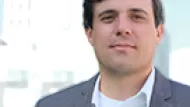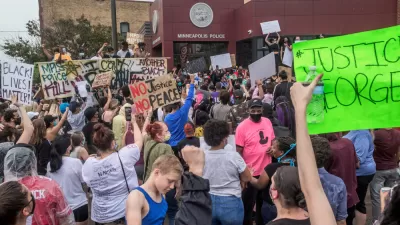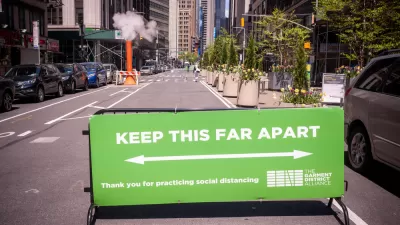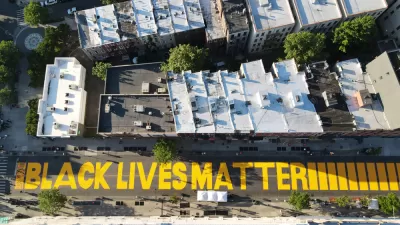The third installment of an ongoing, curated list of a particularly contemporary genre of urbanism punditry.
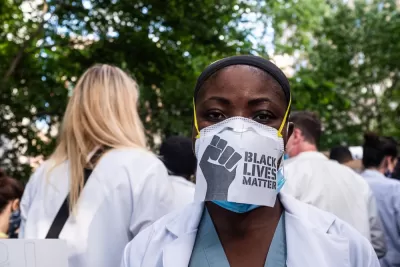
[Updated with new links June 15, 2020.]
Maybe density and congestion weren't the factors for predicting the changes the novel coronavirus would bring to cities and communities. Maybe instead, the factor was equity—racial and social.
It was always predictable that the most vulnerable populations would suffer the most economic distress during the pandemic. Maybe in hindsight, it should have been easily, tragically predictable that the worst public health outcomes of the pandemic would be felt in Black and Latino communities. Maybe in hindsight it should have been predictable that by the third month of this tragic public health crisis, the public urban planning discussion would be almost completely focused on reckoning with institutional, structural, and systemic racism.
Maybe the public health crisis of the coronavirus, and the ensuing economic crisis, planted the seeds for a profound shift in the ways that planners, designers, engineers, and politicians reckon with the racist and discriminatory pasts of their professions. Maybe without the confluence of these multiple crises, the field wouldn't have been forced to confront the ongoing, unacknowledged ways that inequality and discrimination are perpetuated by current practices.
Maybe this time, a public reckoning with racism and discrimination will finally, indelibly bend cities toward justice. Maybe.
Much of the debate about the future of cities and communities in the wake of the public health emergency is still being contested on the terrain defined with the use of terms like density and congestion, wishfully deployed in non-racial contexts. But more than ever it's apparent that using such terms without acknowledging their connection to race is frequently, whether deliberately or unwittingly, a tool of a racist status quo.
We see every day now how arguments that elide race risk running afoul of history. (City Journal offers a particularly egregious example of apoplanesis in the effort to erase the causes of racial justice from the discussion about police and coronavirus in cities.) The discriminatory motivations of white flight in the 20th century are almost gleefully re-enacted by some of the voices currently arguing for dispersion and divestment from urban areas. Even some progressive idealists, similarly committed to their causes as the reformers who bought into urban renewal in the 20th century, might heed a similar warning about history repeating itself if community voices are ignored as community places are erased.
Planetizen has been closely tracking the ongoing debates about the future of cities since the novel coronavirus overwhelmed the vision for 2020. The ravages of the coronavirus have continued since the country turned its collective head to witness highly visible examples of police violence, some highly questionable pandering by politicians on both sides of the aisle, and an unprecedented wave of protests and direct action. In that time, the coronavirus hotspots have relocated from the Northeast to states that seemed relatively unscathed in March and April, like California, Texas, Arizona, and Florida. Rural communities are more frequently included among the number of locations with the fastest growing rate of infection, and the largest deficit of resources for mitigating the spread and treating the infected.
Predictions about the future of cities after the coronavirus served as a form of cultural currency in the early months of the pandemic, but as the national mood shifts again, it's time to re-evaluate assumptions about the defining terms of the debate. Here are a few examples of the urbanist genre of pandemic punditry during the months of May and June (so far):
- How should we live? Density in post-pandemic cities (Domus, May 9)
- The New Geography of America, Post-Coronavirus (Joel Kotkin, May 21)
- Suburban Sprawl Increases the Risk of Future Pandemics (The Dirt, May 26)
- If you’re lucky enough to work from home, where will home be after the pandemic? (Kinder Institute for Urban Research, May 27)
- Coronavirus won’t be the end of big cities (Centre for London, May 28)
- The Pandemic Does Not Spell the End for Cities (Foreign Affairs, May 28)
- One Year, One Neighborhood (Bloomberg, May 28)
- The pandemic is making people reconsider city living, trading traffic for chickens (The Washington Post, June 1)
- https://vimeo.com/425106848 (Transportation Research Board via Vimeo, June 1)
- COVID-19 hot spots shouldn’t make us rethink cities. They should make us rethink poverty (The Star, June 2)
- The Agonizing Question: Is New York City Worth It Anymore? (The New York Times, June 5)
- America's great cities like Chicago are reeling. What must they do to assure their future? (Chicago Tribune, June 5)
- Covid-19 Stalks Large Families in Rural America (The Wall Street Journal, June 7)
- A Tale of Two Urbanisms (City Journal, June 8)
Planetizen presented previous volumes of similarly curated articles on the subject of the future of cities after the pandemic, as well as realizations about the current state of cities as revealed by the pandemic, see the "Debating the Future of Cities, and Urban Density, After the Pandemic" article from March 2020, and the "Density Debate Rages Alongside the Pandemic" article from April 2020.
For more on the intersection of the pandemic with land use planning and the housing market, see the Coronavirus and Density tag on Planetizen.
For more on the intersection of the pandemic with issues of transportation planning, see the Coronavirus and Transportation tag on Planetizen.

Maui's Vacation Rental Debate Turns Ugly
Verbal attacks, misinformation campaigns and fistfights plague a high-stakes debate to convert thousands of vacation rentals into long-term housing.

Planetizen Federal Action Tracker
A weekly monitor of how Trump’s orders and actions are impacting planners and planning in America.

In Urban Planning, AI Prompting Could be the New Design Thinking
Creativity has long been key to great urban design. What if we see AI as our new creative partner?

King County Supportive Housing Program Offers Hope for Unhoused Residents
The county is taking a ‘Housing First’ approach that prioritizes getting people into housing, then offering wraparound supportive services.

Researchers Use AI to Get Clearer Picture of US Housing
Analysts are using artificial intelligence to supercharge their research by allowing them to comb through data faster. Though these AI tools can be error prone, they save time and housing researchers are optimistic about the future.

Making Shared Micromobility More Inclusive
Cities and shared mobility system operators can do more to include people with disabilities in planning and operations, per a new report.
Urban Design for Planners 1: Software Tools
This six-course series explores essential urban design concepts using open source software and equips planners with the tools they need to participate fully in the urban design process.
Planning for Universal Design
Learn the tools for implementing Universal Design in planning regulations.
planning NEXT
Appalachian Highlands Housing Partners
Mpact (founded as Rail~Volution)
City of Camden Redevelopment Agency
City of Astoria
City of Portland
City of Laramie

























